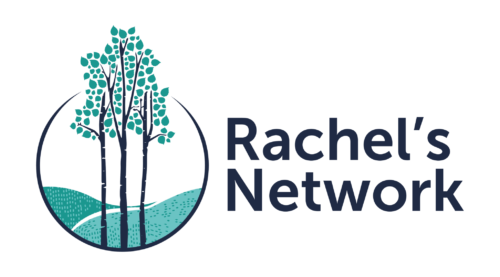Diverse groups are more effective yet only 22 percent of nonprofit board members are people of color. The situation is even worse for environmental nonprofits. Members Marcia Angle, Sam Boren, and Kim Milligan have all worked to ensure their nonprofits better reflect the communities they serve. In this Q&A, they share their experiences and advice for other board members.
How did you become involved in this issue?
Sam: I became involved as a professional recruiter and then as a board member for several organizations. Investors were pressing corporations to do something, and this was then reflected in nonprofit boards. As a recruiter I was expected to know something. Truthfully, we were all learning together.
Marcia: I found myself on several very non-diverse nonprofit boards which were, nonetheless, doing good work, and no one had stepped up to lead these boards towards JEDI (justice, equity, diversity, inclusion). I was willing cause enough discomfort to motivate action.
Kim: My initial experience with JEDI work was as a nonprofit attorney representing domestic violence survivors in court. The nonprofit I worked for in the 90s hired diversity consultants. I still rely on some of the tools and awareness that I gained during that time.
After I transitioned to doing primarily environmental work more than a decade ago, I came to learn that the mainstream environmental movement has excluded, exploited, and disregarded people of color. The US has harmed communities of color—by making them sacrifice zones where they bear the largest burdens of climate change—and self-sabotaged the movement by not inviting everyone to the decision-making table. We won’t succeed in finding solutions to the incredibly complex environmental issues we face unless everyone has a voice.
What are the main barriers to building inclusive environmental nonprofit boards?
Marcia: Many nonprofit boards have taken the easy route to fundraising by just putting well-heeled people on their boards who would donate and recruit their friends to donate. Given the legacy of racism in this country, those well-heeled board members have been disproportionately White. We must recognize that including diverse perspectives on the board is so important that it eclipses the (lazy!) option of having all board members also be large donors.
Sam: Environmental organizations have not traditionally served very diverse constituencies and most board members have been White. Recruiting diverse board members is the first step. Building inclusive culture is a separate issue that we are only now undertaking.
Kim: Because of 400+ years of systemic racism in our country, White families have accumulated exponentially more intergenerational wealth than families of color. As long as nonprofits prioritize wealthy board members, we’re going to be stuck with mostly White boards with limited diversity of perspective.
We need to move to a board model that authentically and fully values the myriad ways that board members can contribute to strategic decision-making and governance (networks, connections, expertise, understanding of the underlying issues, leadership skills, representing stakeholder communities, etc.)
Organizational culture is invisible to many of us who are part of the dominant group or in positions of power. We must be able to see culture to change it.
As volunteers with great intentions to help save the planet, we may be reluctant to peel back the layers and explore how we’ve been unconsciously complicit in and even benefitted from systemic racism—as individuals, in our organizations, and in the environmental movement.
Many White people don’t initially see a connection between JEDI and environmental work—they often tell us to “stay in your lane” and that JEDI work is a distraction from our mission. It’s vital for the board/staff/organization to understand how JEDI is deeply connected to the mission.
What progress have you made on your own board/s?
Kim: A national board I served on for many years just elected a class of five women of color, bringing the board close to 40 percent directors of color. It took us several years of intense conversations and trainings to authentically recruit those new board members and create an inclusive space/culture.
During their first two-day board meeting, their voices changed the conversation dramatically—adding so much nuance and perspective that informed our decisions. One poignant moment was when a new Indigenous board member looked around the austere law firm meeting room across from the US Capitol and said “I’m sitting here in a space where people who look like me have not had the opportunity to sit.” This is one story that represents the immense opportunity and possibility of doing this work!
Marcia: I have been a squeaky wheel, as a board member, for well over a decade, at several wonderful nonprofit organizations. Each just needed a persistent gadfly to persuade the board to make an explicit commitment to JEDI. I made grants to hire JEDI consultants on two of my nonprofit boards, but as you can imagine, the heavy lifting was really done by staff members.
Sam: We have added several people of color on our board, but have not met our goals to better reflect diversity. We just hired a consultant to help us evaluate our board culture and set goals to become a more inclusive and anti-racist organization.
What advice do you have for other funders looking to adopt these practices? Any helpful resources to suggest?
Sam: There are very talented people of color who are interested in environmental organizations, but they are in high demand. Boards need specific recruiting strategies that include what their particular value proposition is for new board members. For boards looking to create more inclusive cultures, this work is best done with the help of an outside consultant.
Marcia: Even if you don’t serve on a board, you can make seed gifts for JEDI work, including nudging the organizations to create explicit diversity internships. For organizations further along in their JEDI and environmental justice work, you can earmark donations to accelerate those efforts. Be persistent and targeted.
Kim: First, the board and staff need to be very clear about why JEDI is important to the organization and mission. This is how you build an authentic foundation.
I’ve also found resources from BoardSoure, Certified Diversity Executive, and the Continuum on Becoming an Anti-Racist Multicultural Organization to be helpful.
Be sure you’re doing the work on both an organizational and individual level, lean into discomfort (people of color in our country have been made uncomfortable every day of their lives… White folks need to spend time and effort understanding and reckoning with our history and role), take every opportunity you can to learn (webinars, discussion and book groups, trainings), and commit to being an ally. I just saw a great quote: “The world is changing and I’m on the transition team.” The status quo isn’t working for any of us—let’s build the most inclusive environmental movement we can.
Photo by Annie Spratt on Unsplash


